11-7-24
The Heroic Fight: Soulemane’s Story at TAFFF
By Diane Sippl
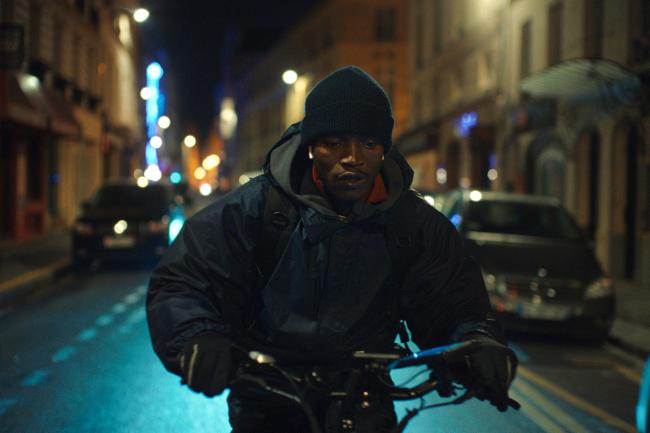
Many an attendee at TAFFF this past week was rewarded by a Closing Night screening of a swashbuckling cinematic adventure that captivated the hearts and minds of young cineastes with the escapades of the longstanding French icon, The Count of Monte Cristo. The film earned the American Students Award at the annual festival but was also devoured with deep appreciation by older fans and critics alike. Its makers, Matthieu Delaporte and Alexandre de La Patellière (creators of The Three Musketeers), boiled down the epic of 1,200-plus pages to a 3-hour tale of revenge—its victories of justice but also its moral defeats—for a new cinema classic in the history of its many filmic adaptations. Lead actor Pierre Niney held a psychological fascination from spectacle to spectacle, none of them excessive, all of them enthralling. And who would expect that that same degree of fascination was to be found in a lone cyclist, a working “outsider,” who never left the streets of Paris today?
At The American French Film Festival, held for the 28th year from October 29 to November 3, 2024 at the Directors Guild of America Theater Complex, the Critics Award went most deservedly to Souleymane’s Story by Boris Lojkine after the film had won the triple awards of Jury Prize and Best Actor in the Un Certain Regard segment of the Cannes Film Festival in May as well as the festival’s FIPRESCI Prize. No dashing swordplay, dungeons, mansions, or Mediterranean treasures surface in Souleymane’s daily routine—only two days, to be exact.
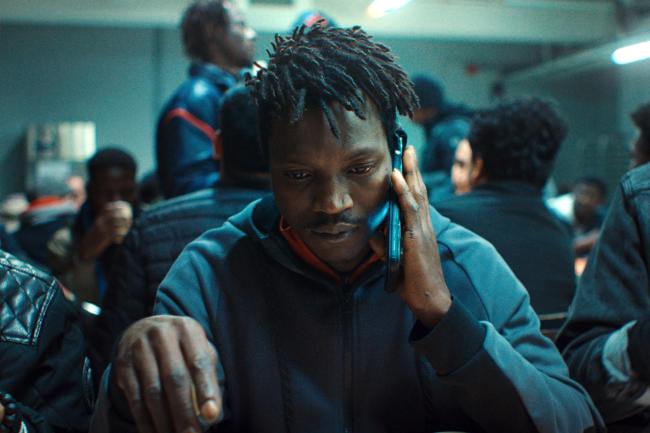
His is a compact story that takes him only as far as the temporary hostile for asylum seekers and the office where he faces his interviewer. The drama is tight, like water to a duck’s back, in-between these spaces as he sails not over scenic seas after Napoleon’s war but over puddled streets on his two-wheeler with delivery basket. A not-so-distant cousin to De Sica’s Bicycle Thief and the Dardennes’ The Kid with a Bike, Souleymane also struggles, and Lojkine also gives us the city from an outsider’s point of view.
The pace and the rhythm are punctuated not by some pre-arranged musical score but, as in the style of Lojkine’s predecessors, with the sounds of the city, abrasive with traffic and sirens, and with Souleymane’s own heartbeat to the accompaniment of his memorized words that turn over in his head as he rounds every corner on his night journey—like some kind of mantra with the magical power to settle his anxiety and focus his intent to secure a safe haven in a new country. His mental recitation is persistent, but is it full of catch-phrases? The sound of the mantra vibrates in his inner ear—a wish, a hope, and a prayer echo the rhythm of his travail—but the words may not suffice. In fact, are they true?
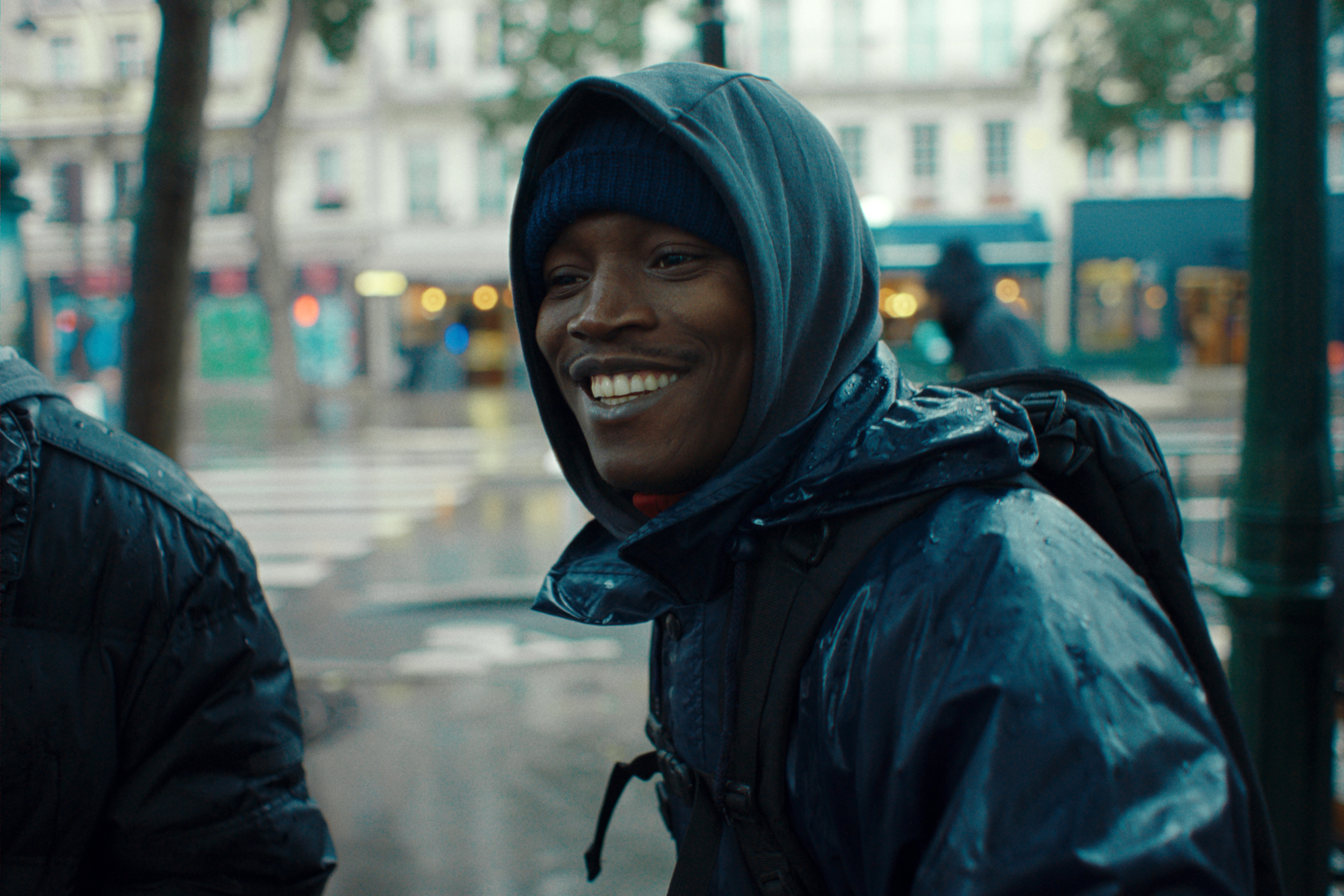
Surely, there is not one false note in the characterization, casting, and acting. Lojkine started with stories straight from the Guinean émigrés, self-reports about their asylum interviews. He also attended interviews conducted by the French Office for the Protection of Refugees and Stateless Persons in order to stage his film’s culminating scene as a duel—not between “good” and “evil” but between a dire fight by Souleymane to win his case, with the full an empathy of the viewer, and the reality that sets in. Our underdog hero’s fate rests in facing himself. Says Lojkine, “We re-wrote the scene after the rehearsals, intertwining Souleymane’s story with many details from Sangare’s own life. It took a lot of courage for him to do it. He went for it and gave us all goosebumps.”
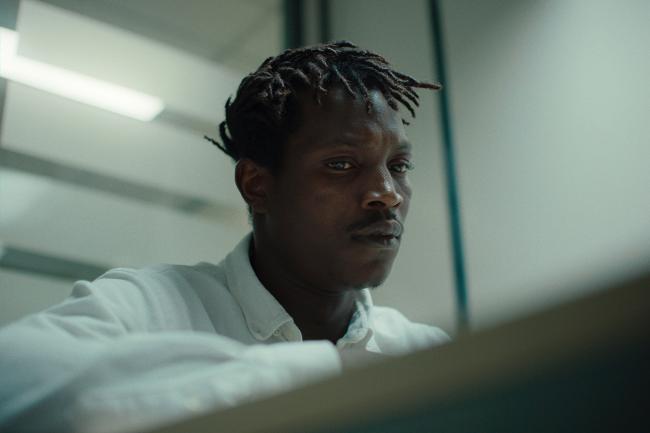
It’s worth noting that Souleymane may not yet be connected with French institutions, but he is not disconnected from the world. In Paris, we see him interacting with fellow Guineans, whether they are old friends or new cronies who help him with survival—work, a bicycle, shelter. He calls home to check on his mother. He goes to great lengths to call his beloved; in a heartbreaking scene, he attempts to explain why he can’t “bring her” to France—set up her safe transport, provide a place for them to live, take care of her. From our point of view, less is more in the words he uses; undoubtedly, from her point of view, less is just that, less, and not enough.
Honoring the tenets of Italian Neorealism or French Nouvelle Vague or Danish Dogme ’95, casting was done from the streets of Paris and the Guinean community there, where 23-year-old Abou Sangare emerged as a non-professional with no acting experience, having arrived in France at age 16. While Sangare did actual delivery work in the city to familiarize himself with the bike, the bag, the app, the phone, and the words to introduce himself to the clients and the restaurants where he collected the food, Lojkine re-wrote his script (as he had planned to do) to adapt it to the actors and their ways of speaking and being. The writer-director comments, “This is what I like about working with non-professional actors: “They come as they are, carrying their own world with them. It is up to me to welcome their singularity.”
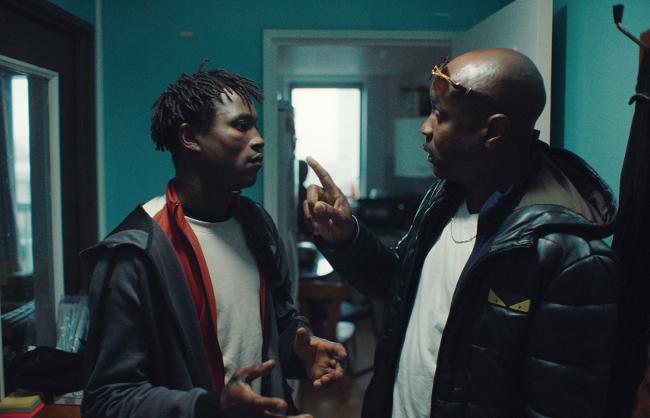
Lojkine wanted to embed his cinematic tools in the real world, even staging dialogues on a train, in a crowd, amidst a traffic jam. With a crew of 3-6 people—“no lighting, no trucks, no catering”—he could shed all the encumbrances of a Hollywood-style production mode. The colors and contrasts of Paris, its own cacophony and commotion, could set the real “stage” for Souleymane’s race from place to place until his slow, reluctant, halting words could find their space in his haunting tale, one that, thanks to a performance for the ages, is utterly unforgettable.
Souleymane’s Story
Director: Boris Lojkine; Screenplay: Boris Lojkine, Delphine Agut; Producer: Bruno Nahon Unité; Cinematography: Tristan Galand; Editing: Xavier Sirven; Sound: Marc-Olivier Brullé, Pierre Bariaud, Charlotte Butrak, Samuel Aïchoun; Sets: Géraldine Stivet; Costumes: Marine Peyraud.
Cast: Abou Sangare, Nina Meurisse, Alpha Oumar Sow, Emmanuel Yovanie, Younoussa Diallo, Ghislain Mahan, Mamadou Barry, Yaya Diallo, Keita Diallo
92 minutes, color, in French, Fulah, and Malinka with English subtitles.